Invasive animal species may seem like nothing more than a term coined by scientists. But, in reality, intruding animals have a terrible impact on the ecosystem. To enter the United States, there are different domestic and international routes for invasive animals, such as amphibians, birds, fish, mammals, and reptiles.
Two traits define invasive species; they are typically alien to the inhabiting ecosystem, and their presence harms or is expected to damage the environment, public health, and economy. Typically, they have no natural enemies and can reproduce rapidly. This allows them to increase their population in no time.
Their existence also poses a challenge to native animals. The National Wildlife Federation estimates that invasive species put about 42% of endangered or threatened species at risk.
Invasive species are a threat to native species, public safety, property, ecosystems, biodiversity, infrastructure, water resources, recreational activities, and many more facets of human existence. In addition, the cost of controlling invasive species and the resultant economic losses are estimated to be $120 billion annually.
How Are Invasive Species Introduced?
Invasive species are now more of an issue because of globalization. Animals have been migrating between continents for eons, but global human travel has significantly sped up this process.
When European colonists traveled to the Americas, they altered preexisting animal populations and introduced new ones.
Invasive species have historically impacted the United States because people have brought new animals for research, fur, sport, or aesthetics.
The spread of new exotic species has coincided with human migration patterns worldwide, leading to a fall in native species on the continents where they originated.
While new invasive species may increase the number of species on each continent, there will be an inevitable decline in native species populations.
How Humans Contribute to Invasive Animal Populations
In many ways, human actions result in the introduction of invasive animals. For example, it could be intentionally introduced for biological pest control, as game animals, or for other purposes.
For instance, the European starling species, native to Europe, Asia, and North Africa, was introduced to North America as pest control for insects and as a pet for some people.
Hawaiian sugar cane producers introduced small Asian mongoose to their islands in 1883 after learning that Jamaican farms had released the predator to reduce the rat population. Unfortunately, the alien mongooses and the targeted rats never came into contact because the former are daytime creatures while the latter are nocturnal. As a result, the mongoose started eating the native birds instead of the rats.
Other invasive animal species came into the country as stowaways or after being released into the wild. For example, pet Burmese pythons were released into the Everglades, a swampland in South Florida. The snake, native to the rainforests of Southeast Asia, has little to no natural predators in their new habitat and eats a variety of local species, including the limpkin and white ibis.
Species of domestic animals such as rabbits, camels, cats, dogs, pigs, and horses that have been left to roam also constitute invasive species.
Impacts of Invasive Species on Native Wildlife
Exotic species beat native animals to the wild’s available food and other resources. As a result, they destroy native flora, spread diseases, prey on native species and their young, and even impede breeding in native species.
The Missouri River in North America is home to several large fish species, including the bighead and silver carp, which escaped from fish farms in the 1990s. Plankton, a small aquatic animal, is the primary food source for these fish. It’s also the food source of many local species, including paddlefish.
Paddlefish have a slower feeding cycle than carp do. Thus, the fish are currently insufficiently fed due to the abundance of carp in the river.
The aliens also pose indirect risks. For example, they can alter the food web in an ecosystem while offering little to no food value, thus upsetting the balance between animals that depend on one another for food or other necessities.
Besides reducing their diversity or abundance, invasive species can also affect the habitat value of other species for native wildlife.
In the 1900s, ranchers imported nutria, South American indigenous rodents, to North America to breed them for fur. Unfortunately, the ranchers’ failure let some nutria loose into the wild.
These days, they are a serious nuisance in the American Gulf Coast and Chesapeake Bay regions, damaging the local food chain and ecosystem.
Nutria eats rushes and tall grasses, which aid in stabilizing soil, sediment and avoiding soil erosion. In addition, these plants are essential to the marshy wetlands of the area; they serve as food sources, nesting locations, and refuges for many organisms.
Invasive Animal Population by State
Alabama: 27
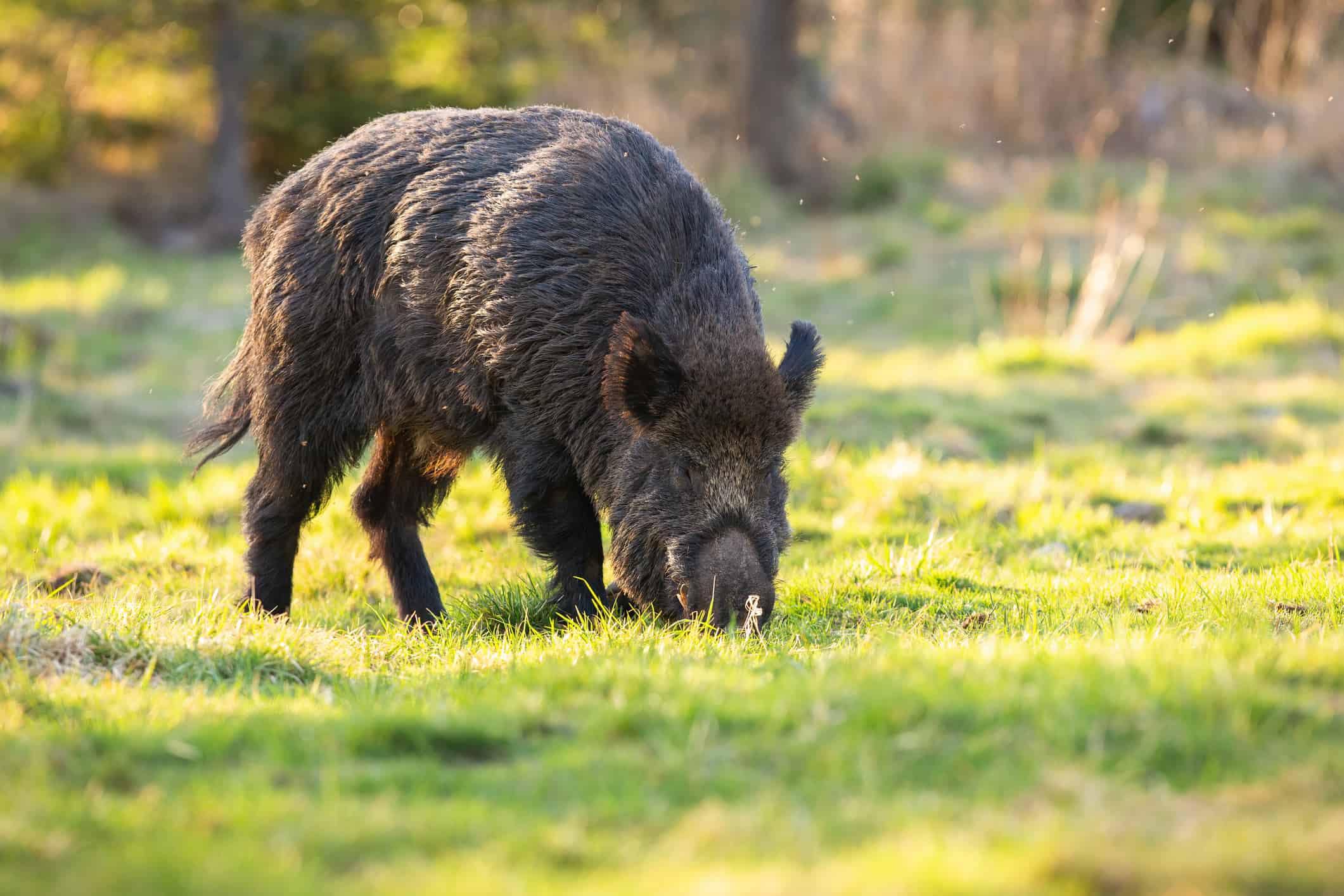
Wild boars live in Alabama, but they are an introduced species there, not native.
©iStock.com/sus scrofa
Alabama is endowed with a wide range of terrestrial environments, from gulf coasts to the lower Appalachian Mountains, which contribute to the state’s incredible natural diversity. Wetlands and water resources are also abundant in the Heart of Dixie.
The Mobile-Tensaw River Delta is the largest river delta and wetland in Alabama. It’s the second-largest delta in the contiguous United States, spanning a 40-by-10-mile area and about 260,000 acres.
With the diverse wildlife supported by these habitats, Alabama is routinely rated among the top most biodiverse states in the country.
Invasive animals find homes in Alabama’s rich habitats across its 67 counties. Some alien species include wild boar, American bullfrog, shovel-headed garden worm, bighead carp, Mediterranean gecko, nutria, red-eared slider, feral cat, greenhouse frog, European starling, and many others.
Alaska: 1

The European green crab is Alaska’s only invasive species.
©davemhuntphotography/Shutterstock.com
Wildlife abounds in Alaska, as varied as the state’s topography. Mammals, reptiles, birds, and fish all rely on the Alaskan Peninsula as an essential ecosystem. The northern boreal forest also has a wide range of fauna.
Its extensive river system ensures a large number of border wetlands. In addition, there are riparian habitats and floodplains along every river.
The European green crab is the only invasive animal species in the state, with 16% coverage.
Arizona: 9

The red-eared slider is an introduced species in Arizona.
©effective stock photos/Shutterstock.com
The forests, deserts, grasslands, rocky mountains, tundra, and floodplains along the Colorado River within Arizona contribute to the richness of the state’s ecosystems. These diverse habitats also accommodate unique and common wildlife in the state.
Many bird species and the elusive jaguar can be found in southern Arizona’s Sky Island region, while the mountain-dwelling animals are within the forested San Francisco Peaks of Northern Arizona.
Exotic species in the state include white-nosed Coati, feral pigs, New Zealand mud snails, American bullfrogs, red-eared sliders, house mice, coyotes, shovel-headed garden worms, and Mediterranean geckos.
Arkansas: 20
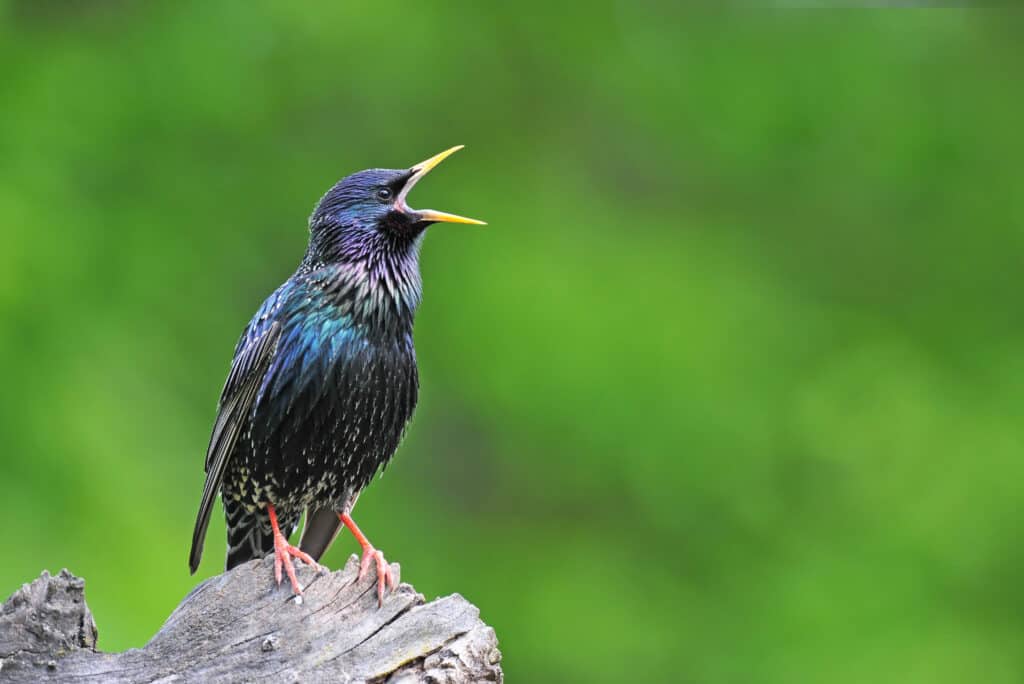
European starlings are excellent mimics and can imitate other birds, machinery, and even human speech.
©Soru Epotok/Shutterstock.com
Thanks to the six natural regions in the state, wild animals in Arkansas have access to thousands of acres of various habitats. Wetlands occupy about 8% of the state, so there are many swamps, bottomland hardwood forests, prairies, and floodplains of the Mississippi for wildlife to thrive.
20 non-native animal species exist in the state with varying percent coverage. They include feral hogs, European starlings, nutria, shovel-headed garden worm, American bullfrog, green sunfish, coyotes, Mediterranean geckos, wild cats, house mice, red-eared sliders, house sparrows, mud shad, American shad, rock pigeons, 3 carp species (common, silver, and bighead).
California: 30

The mostly brown coloring of Egyptian geese helps them blend in with the grass in river areas.
©LeonP/Shutterstock.com
The Golden State is dominated by 27 invasive species, from reptiles and worms to mammals and fish. Examples are; the New Zealand mud snail, coyote, red-eared slider, shovel-headed garden worm, house mouse, roof rat, feral pig, ball python, wandering broadhead planarian, European Starling, Egyptian goose, red swamp crayfish, bighead carp, mute swan.
Due to its size and geography, California has ecosystems along the coast, in the desert, in marshes, grasslands, scrublands, and forests.
Colorado: 9

The New Zealand mud snail has radula or tiny mollusk teeth.
©iStock.com/Heather Broccard-Bell
- Coyote
- New Zealand mud snail
- American bullfrog
- Wild swine
- Red-eared slider
- House mouse
- Common carp
- European starling
- Eurasian collared-dove
These species can be found in different state habitats, such as grasslands, prairies, alpine summits, forests, mountains, deserts, and wetlands.
Connecticut: 8

Residents in Connecticut could have the unique pleasure of sharing their space with the invasive Norway rat.
©JaklZdenek/Shutterstock.com
Coastal areas, marshes, and forests are just a few of the abundant ecosystems available to wildlife Nutmeggers. Connecticut features eight invasive animals:
- The American bullfrog
- Norway rat
- European green crab
- Wandering broadhead planarian
- House sparrow
- Red-eared slider
- Red Fod
- Coyote
Delaware: 10
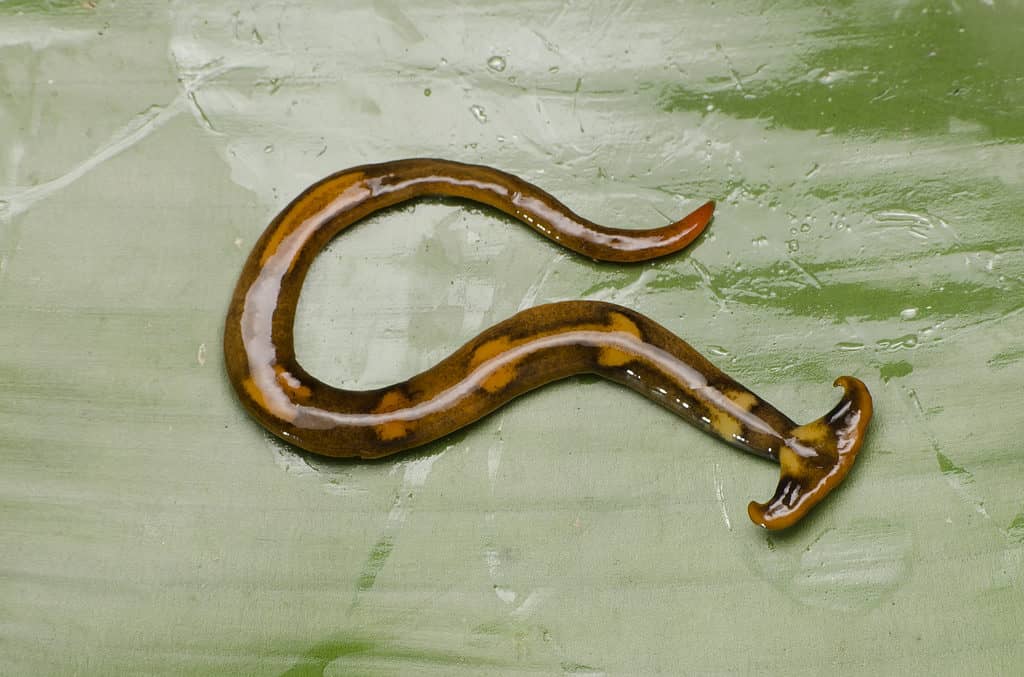
If you see a hammerhead worm in Delaware, you might have imported landscaping materials to thank for its company.
©zaidi razak/Shutterstock.com
Delaware has ten, unlike its eastern neighbor New Jersey with 30 alien species. They include the three-lined land planarian, multi-lined hammerhead worm, wandering broadhead planarian, three-lined land planarian, red fox, house mouse, New Zealand mud snail, coyote, American bullfrog, and red-eared slider.
Florida: 652
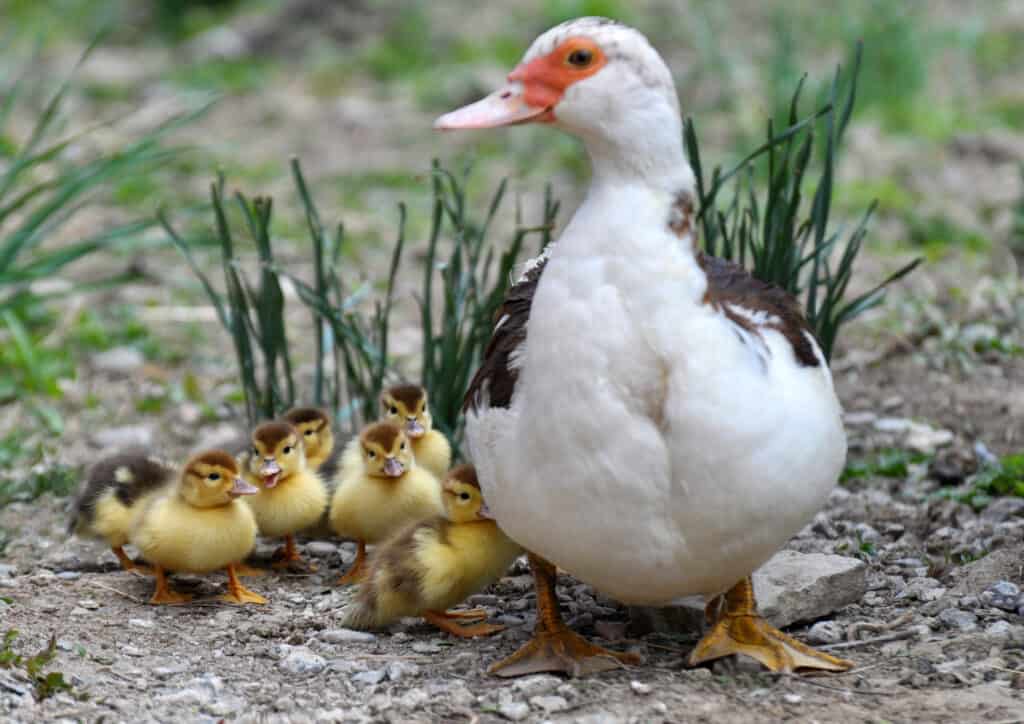
Muscovy ducks, invasive to Florida as they are, can interbreed with other duck species or transmit diseases.
©iStock.com/Orest Lyzhechka
Wildlife is incredibly diverse in Florida. It’s among the top five states in terms of endemic species, with over 4,000 identified animal species. The state’s ecosystems and habitats are to thank for the remarkable level of diversity. So, it’s hardly surprising that the Sunshine State hosts a whopping 652 invasive animals.
The green iguana, Muscovy duck, Argentine black and white-tegu, African spurred tortoise, house sparrow, brown anole, Indian peafowl, Burmese python, European starling, lionfish, nine-banded armadillo, Peter’s rock agama, tropical house gecko are some examples.
Georgia: 61

Argentine black and white tegu
s are striking animals, but they’re not supposed to be in Georgia.
©Daniel Lamborn/Shutterstock.com
With 48 exotic animals across 159 counties, the population of invasive animals in Georgia pales compared to neighboring Florida. Some 48 alien species include:
- Argentine black and white tegu
- Two-spotted spider mite
- Cuban treefrog
- Wild boar
- Feral cat
- Mediterranean gecko
- Grass carp
- Common carp
- European starling
- Shovel-headed garden worm
Hawaii: 3

Wild boars are an introduced species in many states, and not even the noncontiguous Hawaii could escape its invasion.
©iStock.com/JMrocek
The coral reefs, wetlands, beaches, rainforests, and mountains of Hawaii are recorded to accommodate three invasive animals: wild boar, mollusk-eating hammerhead worm, and shovel-headed garden worm.
Idaho: 4
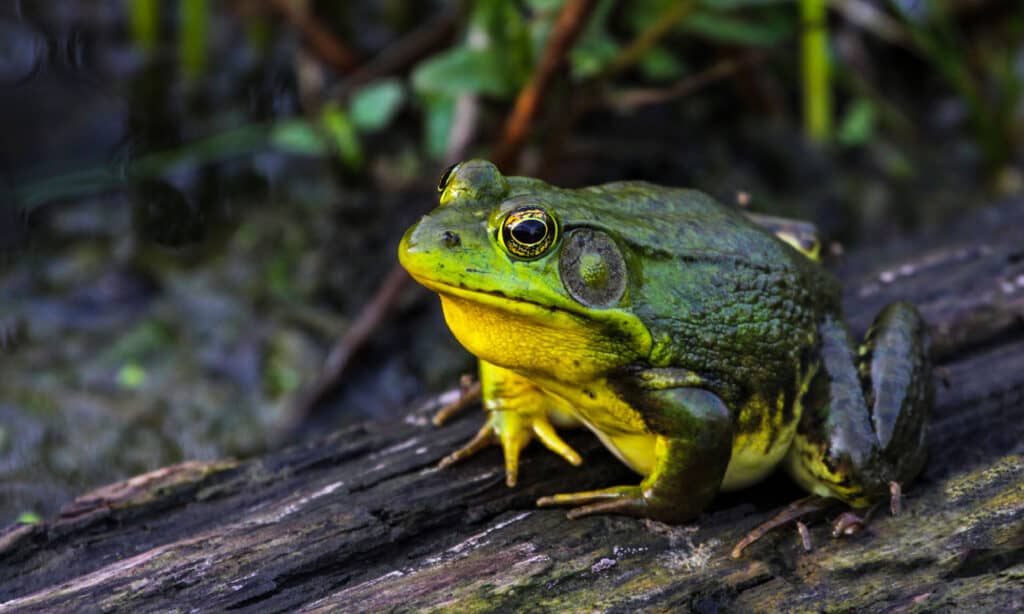
As American as the American bullfrog is, they are invasive in many states, including Idaho.
©iStock.com/187715314
The Gem State also has four invasive species—New Zealand mud snail, American bullfrog, coyote, and red-eared slider—living across its ecoregions and habitats.
Illinois: 85

The freshwater golden clam, or Asian clam, is invasive in the U.S., and they call Illinois home.
©Jay Ondreicka/Shutterstock.com
Illinois’s four major habitat types are urban, aquatic, woodland, and grassland/prairie. These ecosystems have unique traits and host species that have been adapted to them. These species aren’t all native to the state; some alien animal species include common carp, silver carp, silver salmon, grass carp, bighead carp, freshwater golden clams, zebra mussels, Chinese mystery snails, European starling, wiper, feral cat, house sparrow, goldfish, and rainbow trout.
Indiana: 35

The green sunfish lives in Indiana’s waters, but it’s an introduced and invasive species in them.
©Sean McVey/Shutterstock.com
26 exotic animals find comfort in Indiana’s forests, prairies, sand dunes, caves, wetlands, and lakes. Some include jumping worms, feral pigs, green sunfish, freshwater golden clams, American bullfrogs, European starlings, and common carp.
Iowa: 30
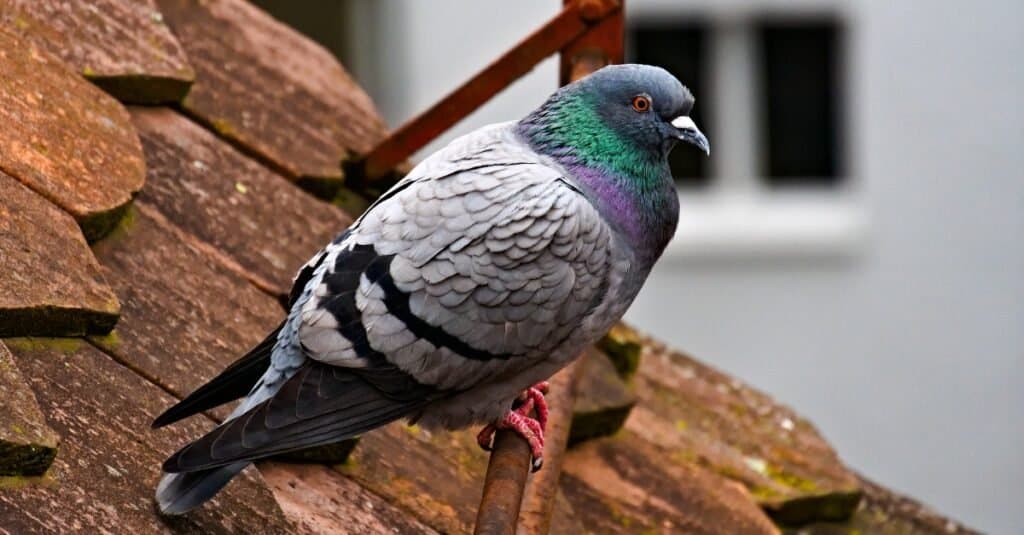
Rock pigeons are one of four invasive birds and 30 invasive species in Iowa.
©iStock.com/Christian Sturzenegger
The many aquatic and terrestrial habitats in Iowa feature 30 non-native animals. There are 14 fish species (goldfish, green sunfish, rusty crayfish, smallmouth bass, flathead catfish, silver carp, common carp, bighead carp, grass carp, northern pike, fathead minnow, bowfin, mud shad, and yellow perch), 6 birds (rock pigeon, European starling, mute swan, and house sparrow, Eurasian collared-dove, and cattle egret), 5 mammals (house mouse, Norway rat, Red fox, coyote, and wild cat), 2 invertebrates (jumping worm and wandering broadhead planarian), 2 mussels (Freshwater golden clam and zebra mussel), and 1 amphibian (American bullfrog).
Kansas: 18
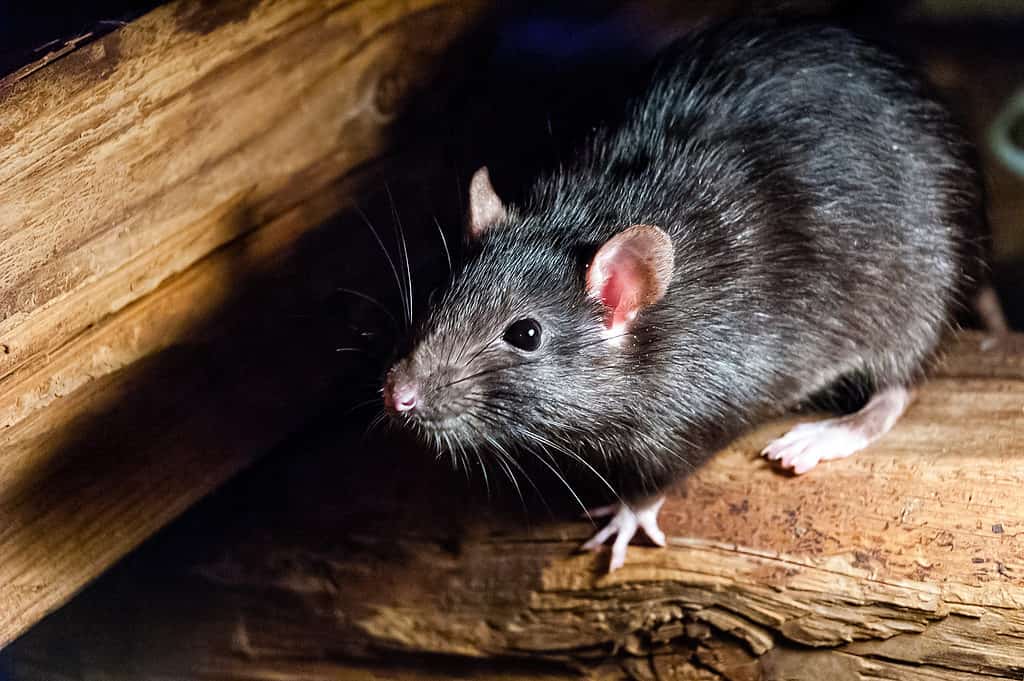
Roof rats, or black rats, are as invasive to Kansas as any rat is to a house.
©Carlos Aranguiz/Shutterstock.com
Kansas has a distinct ecology with a thriving wildlife population due to its location within the Great Plains. This variety of wildlife is also partly attributable to the state’s water bodies. The introduced species in the state include feral pigs, red-eared sliders, roof rats, white perch, orange-spotted sunfish, house sparrows, American bullfrog, bighead carp, cattle egret, green sunfish, and red shiners.
Kentucky: 25

Like in many other states, feral pigs call Kentucky home. Like in other states, too, they are invasive there.
©iStock.com/JMrocek
Wild boar has a 66% coverage of the invasive animals in the state. American bullfrog comes a distant second at 9%. Other listed species include European starling, American bullfrog, alewife, rock pigeon, green iguana, rainbow smelt, silver carp, feral cat, striped bass, and many more.
Louisiana: 31

The Bayou State has 23 invasive animals, but again, none are as destructive as feral pigs.
©Yvdalmia/Shutterstock.com
Feral swine also takes the lead here with its presence in 63 of the 64 parishes in the state. In addition, the Bayou State deals with other non-natives such as Nutria, Mediterranean geckos, European starlings, red-eared slider, coyote, brown anole, red swamp crayfish, bighead carp, shovel-headed garden worm, Cuban treefrog, and the roof rat.
Maine: 5
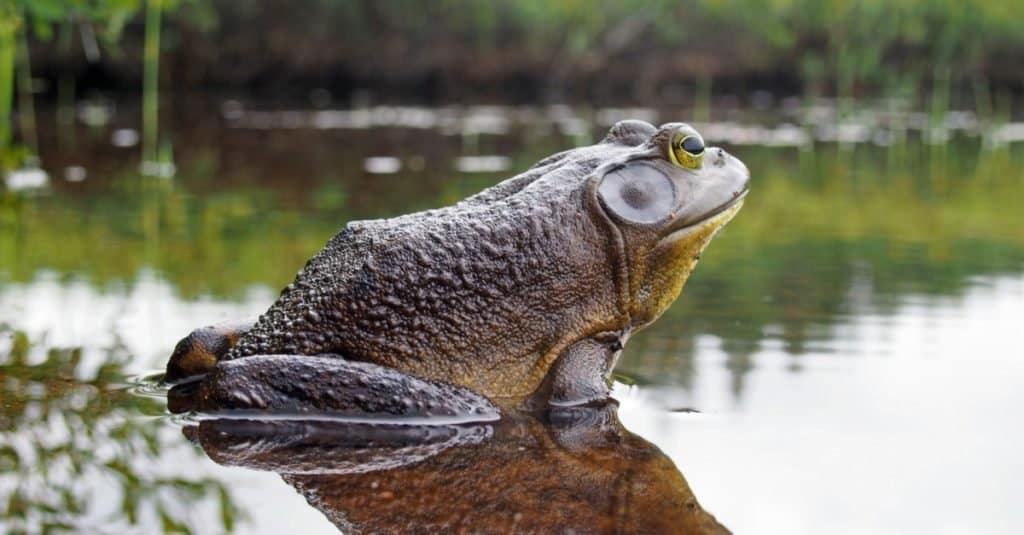
American bullfrogs have a bellowing call that sounds a bit like a foghorn.
©Christian Ouellet/Shutterstock.com
Maine has various habitats, from marshes and forests to swamps and lakes. But, the state manages to keep its invasive animal population to a minimum. American bullfrog, European green crab, Coyote, American red fox, red fox, and wandering broadhead planarian are three species introduced to the state. (Florida is probably jealous.)
Maryland: 13
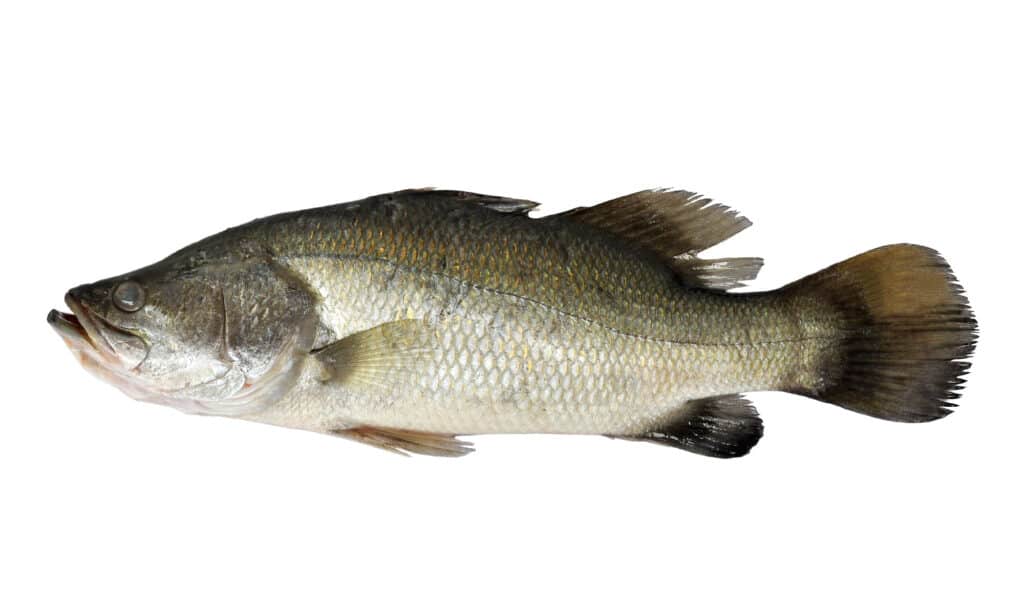
White perches don’t belong in the waters of Maryland, but they’re there regardless.
©daagron/Shutterstock.com
Despite being the 8th smallest state by land area, the Old Line State is rich in biological habitats, including grasslands, cypress swamps, marshes, tidal zones, and forests. The state has 13 widespread invasive species across 23 counties and its independent city, Baltimore.
Examples are the American bullfrog, red-eared slider, red fox, wandering broadhead planarian, three-lined land planarian, New Zealand mud snail, house mouse, white perch, and multi-lined hammerhead worm.
Massachusetts: 12
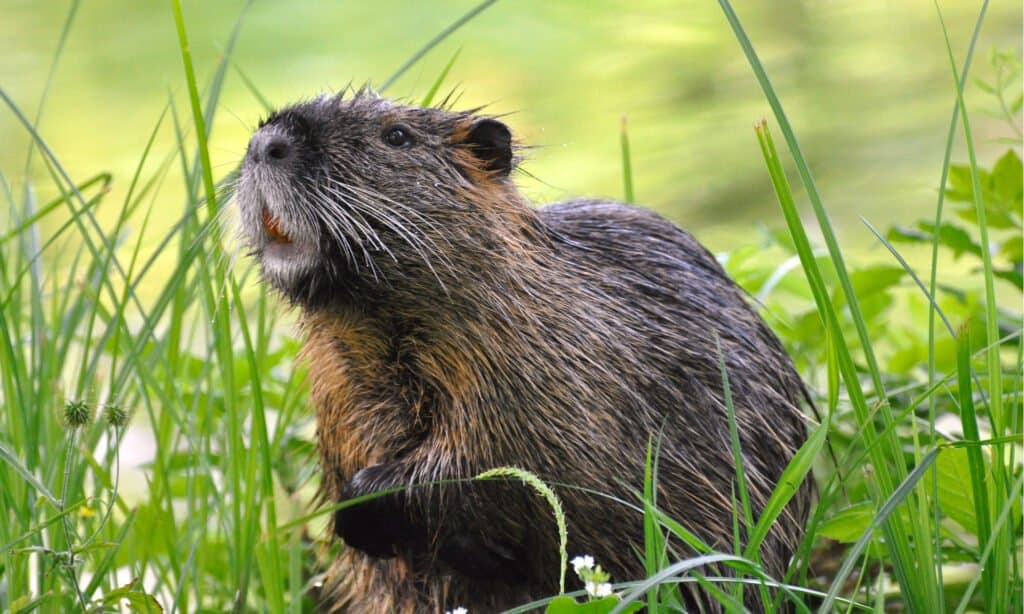
Nutria, distinguished by their orange-stained front teeth, call Massachusetts and the U.S. home likely thanks to the fur trade of the late 19th century.
©Sonja Guijarro/Shutterstock.com
The American bullfrog is prevalent in Massachusetts, with a recorded coverage in 12 counties out of 14. The amphibious species is closely followed by wandering broadhead planarians, distributed across 79% of the state.
Wandering broadhead planarian, coyote, red fox, European green crab, European starling, Norway rat, nutria, three-lined land planarian, Cuban treefrog, rock pigeon, and red-eared slider are also present.
Michigan: 42
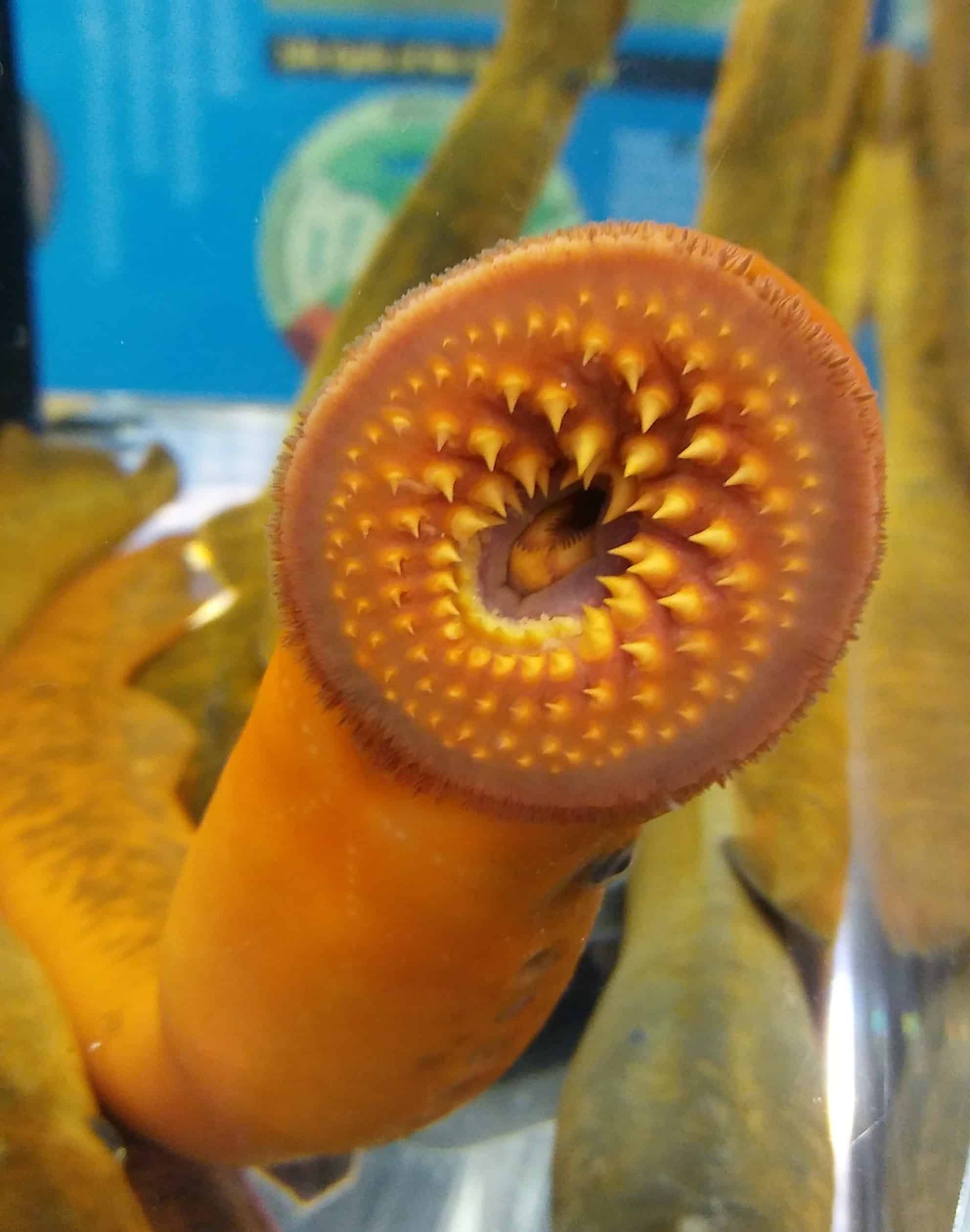
Having invaded the waters of Michigan, be on the lookout for sea lampreys if you find yourself swimming in the lakes there.
©Theresa Grace/Shutterstock.com
Michigan’s landscape consists of wetlands, prairies, sand dunes, open plains, forests, cliffs, river valleys, and the Great Lakes shoreline. Unfortunately, these habitats are inviting to the 36 exotic species that call them home, to the detriment of the native wildlife.
Some are round goby, zebra mussel, New Zealand mud snail, American bullfrog, quagga mussel, banded mystery snail, wild boar, red fox, sea lamprey, and threespine stickleback.
Minnesota: 65

While many of Minnesota’s invasive animals are aquatic, not all are. The brown anole is one that isn’t.
©Steve Bower/Shutterstock.com
Minnesota is aptly named ‘’Land of 10,000 Lakes.’’ In fact, the state has 11,842 lakes. Many of its 65 animal invaders are aquatic. Fish species include round goby, rusty crayfish, goldfish, rainbow smelt, pacu, largemouth bass, mimic shiner, ruffe, red shiner, and many others. The exotic birds include chukar, Muscovy duck, rock pigeon, helmeted guineafowl, European starling, and house finch.
Zebra mussel, Chinese mystery snail, Brown anole, rustic jumping worm, banded mystery snail, jumping worm, American bullfrog, faucet snail, common earthworm, and more represent other animal groups.
Mississippi: 16
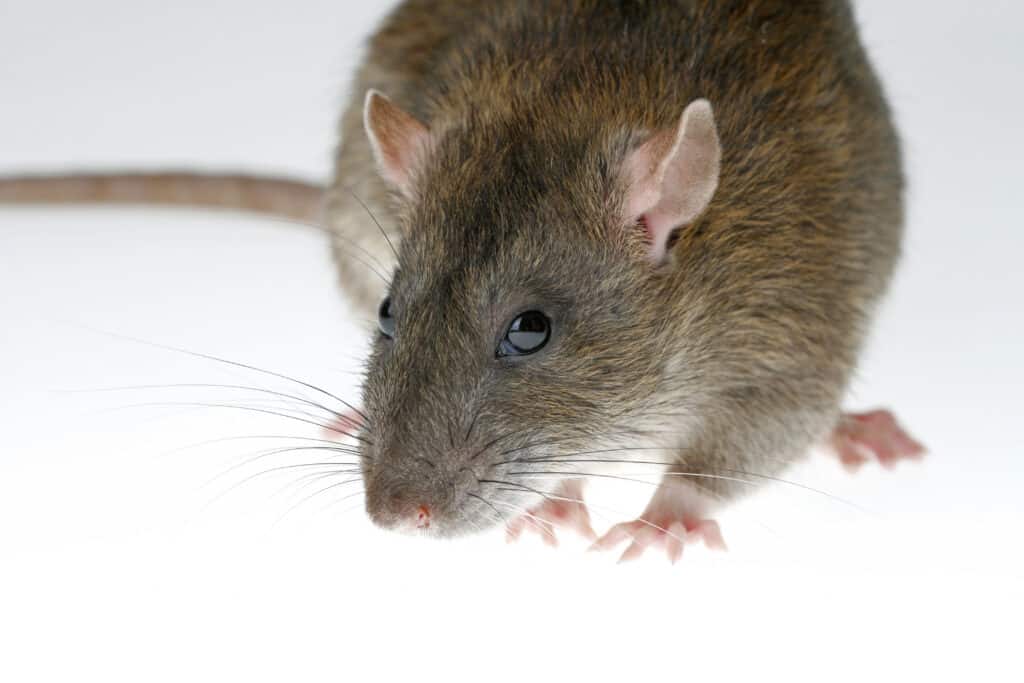
Norway rats have populated Mississippi. In fact, while native to Asia, despite its name, it has invaded every continent.
©Holger Kirk/Shutterstock.com
Mississippi hosts more than a dozen invading species across its 82 counties. Some include Norway rats, wild swine, green sunfish, shovel-headed garden worms, American bullfrogs, nutria, European starling, Eurasian collared-dove, and wild cats.
Missouri: 30
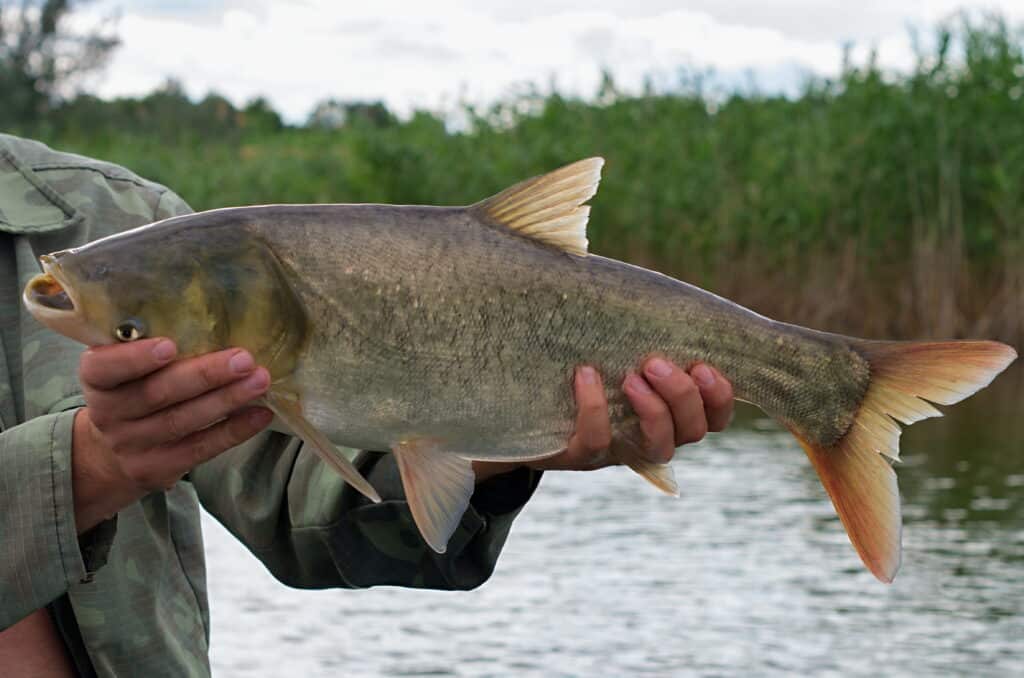
Silver carp are native to China, but they’ve managed to make their way to the U.S.
©Balakleypb/Shutterstock.com
The 115 counties in the Show Me State have nearly twice the number of invasive animal species in Mississippi. The rivers, savannas, glades, caves, woodlands, cliffs, and wetlands of Missouri host freshwater golden clam, silver carp, common carp, wild hog, zebra mussel, red-eared slider, goldfish, American bullfrog, bighead carp, grass carp, European starling and other identified species.
Montana: 4
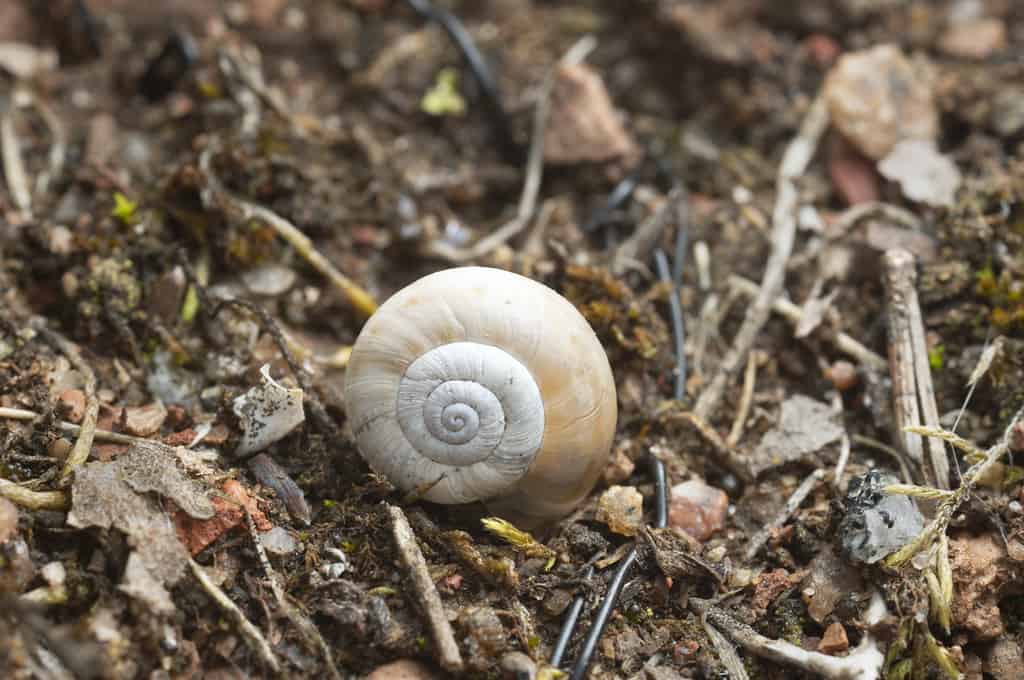
Heath snails live in Montana, where they are not a natural part of the ecosystem.
©Henrik Larsson/Shutterstock.com
Montana has various natural habitats for the survival of wildlife; it’s the fourth-largest state by area. However, the state has impressive management of invasive animals. The most prevalent species the New Zealand mud snail, covers only 18% of the state, while the American bullfrog, coyote, and heath snail are other invasive species in the state.
Nebraska: 9
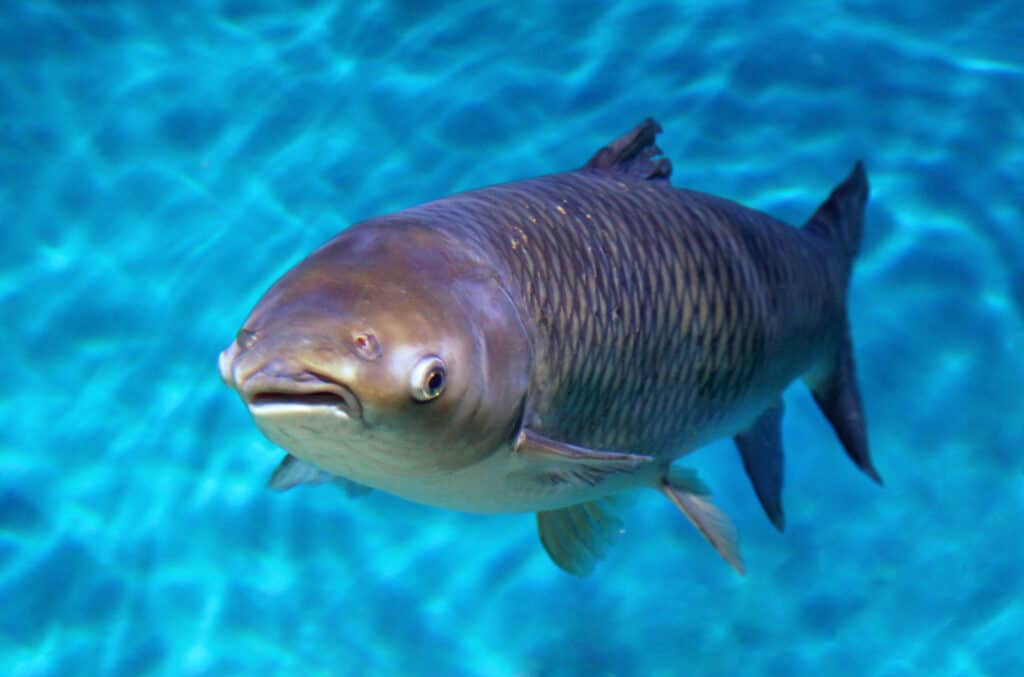
The bighead carp has downward-facing eyes, like most bottom feeders.
©Katoosha/Shutterstock.com
- American bullfrog
- Bighead carp
- Feral pig
- Red fox
- Wandering broadhead planarian
- Feral cat
- Freshwater golden clam
- American red fox
- Coyote
These are the widely introduced species in the state. Like in Montana, the invasive animals in Nebraska have low coverage. The highest, American bullfrog, is present in only 7 counties (the state has 93 counties); this translates to 8% and is far better than what’s obtainable in many other states.
Nevada: 8
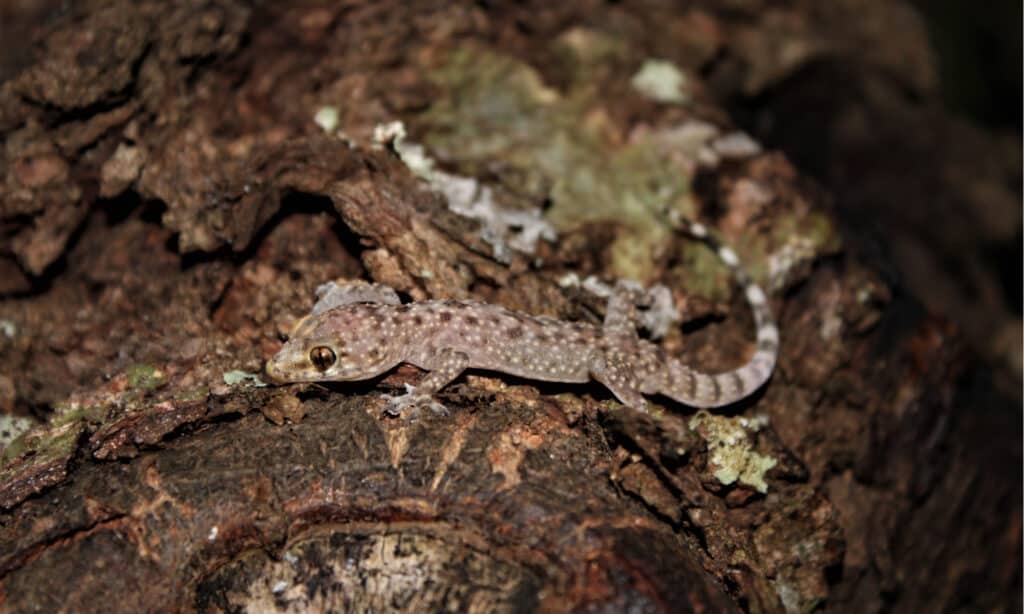
The Mediterranean gecko has invaded more than a few states, and Nevada is one of them.
©Tucker Heptinstall/Shutterstock.com
Nevada features a range of ecosystems, including the Great Basin, arid mountains, lowlands, and deserts. Unfortunately, 8 species of invasive animals, including Norway rat, coyote, Mediterranean gecko, red-eared slider, roof rat, wild hog, New Zealand mud snail, and American bullfrog, compete against native wildlife for the available resources within the ecosystems.
New Hampshire: 7
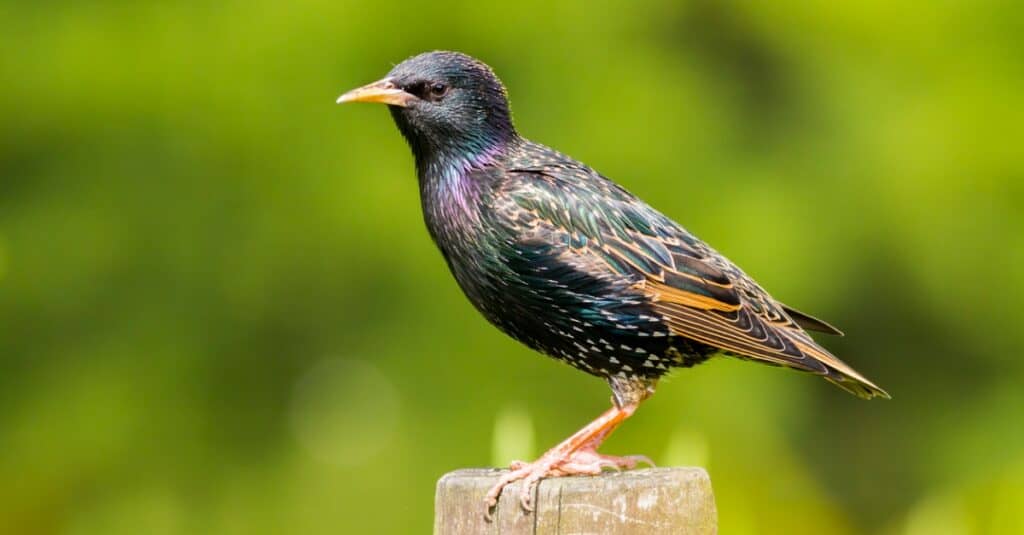
European starlings are pretty birds, but they’re not supposed to be in New Hampshire.
©iStock.com/chris2766
The Granite State deals with the presence of European starling, coyote, red fox, American bullfrog, wild boar, wandering broadhead planarian, and jumping worm across its 10 counties.
New Jersey: 31

Mute swans are native to the Euro-
Siberian
region and northern Africa. They live in New Jersey, too, albeit non-natively.
©Millie Bond – Copyright A-Z Animals
The wetlands, estuaries, salt marshes, pinelands, and forests of New Jersey are home to different categories of wild animals. These habitats accommodate native species and invaders. The alien species include the Chinese mystery snail, American bullfrog, red fox, mute swan, common carp, red-eared slider, rainbow trout, and 25 others.
New Mexico: 12
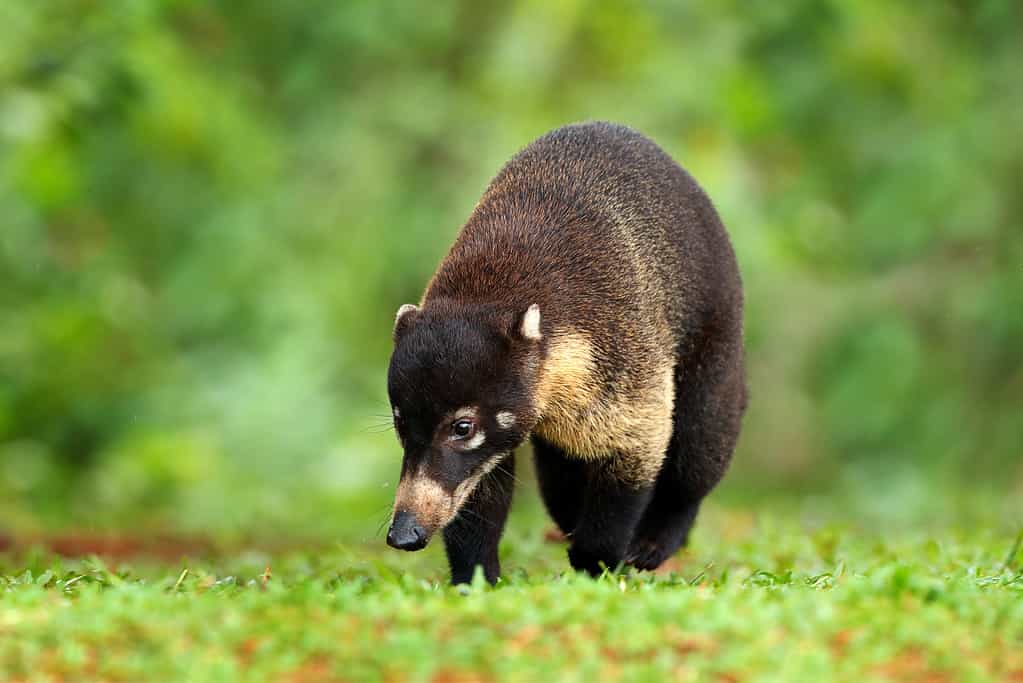
The white-nosed coati is an introduced species in several of the United States. It’s unknown when that introduction occurred.
©Ondrej Prosicky/Shutterstock.com
There’s no shortage of wildlife habitats in New Mexico. The Rio Grande floodplains, snow-capped mountains, forests, volcanic plateaus, arid shrubs, and grasslands are all inhabited by wild animals.
12 invasive species, including wild boar, white-nosed coati, house mouse, Mediterranean gecko, European starling, New Zealand mud snail, common carp, rainbow trout, American bullfrog, and red-eared slider, enjoy the ecosystems in the Land of Enchantment.
New York: 17
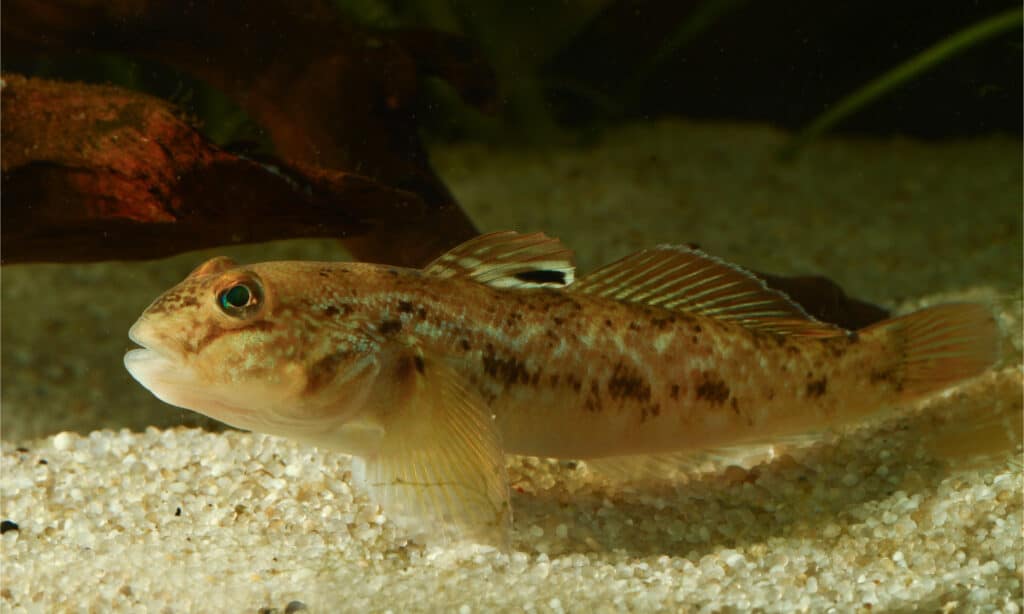
There are invasive colonies of round gobies in America’s Great Lakes.
©Geza Farkas/Shutterstock.com
New York State is popularly known for its eponymous New York City. However, it turns out there are enough habitats to attract up to 17 invasive animals. Some include the European green crab, American bullfrog, three-lined land planarian, round goby, and New Zealand mud snail.
North Carolina: 22
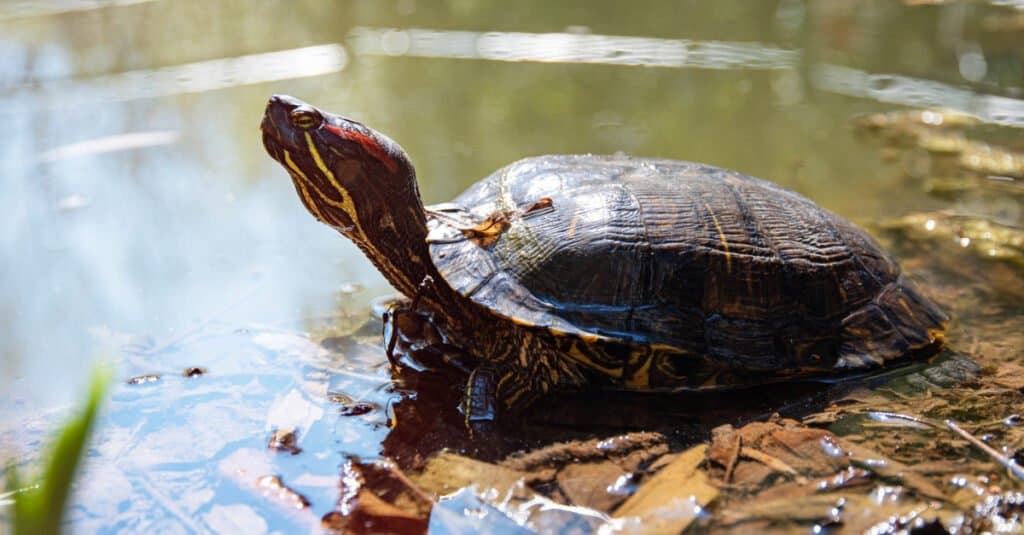
North Carolina is just one of quite a few states that have invasive red-eared sliders.
©iStock.com/Olga Buntovskih
Wild hogs are present in 84 of the 100 counties in North Carolina, making them the most widespread alien species in the state. Shovel-headed garden worms and yellowbelly sliders have 46% and 19% coverage rates, respectively.
Other invaders include multi-lined hammerhead worm, mollusk-eating hammerhead worm, wandering broadhead planarian, American bullfrog, house mouse, European starling, freshwater golden clam, Norway rat, nutria, brown anole, red-eared slider, three-lined land planarian, green sunfish.
North Dakota: 4
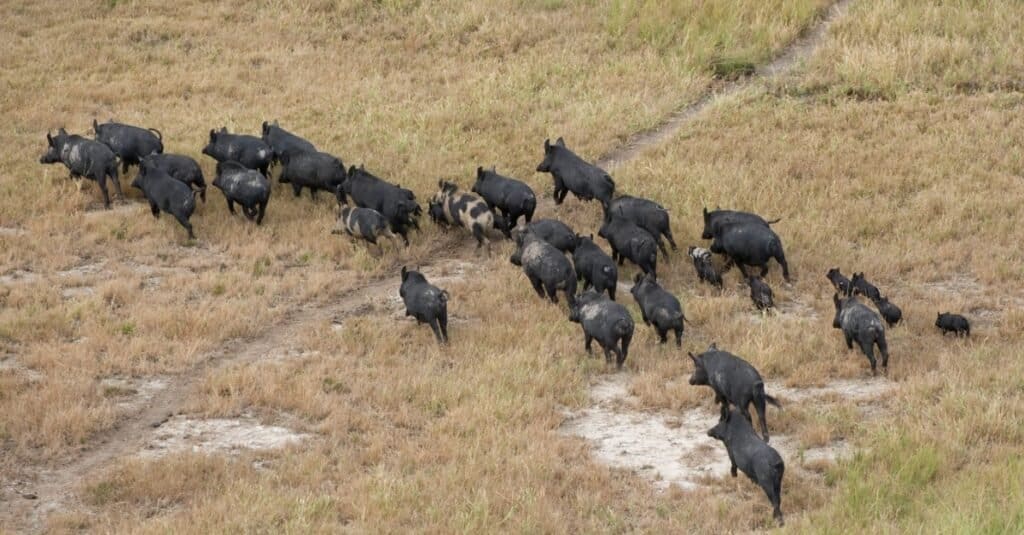
Surprise! Feral hogs live in and have invaded North Dakota.
©iStock.com/JohnCarnemolla
Banded mystery snails, feral pigs, red foxes, and zebra mussels are the only alien species living in North Dakota. Together, they make up 6% of the state’s habitats.
Ohio: 33
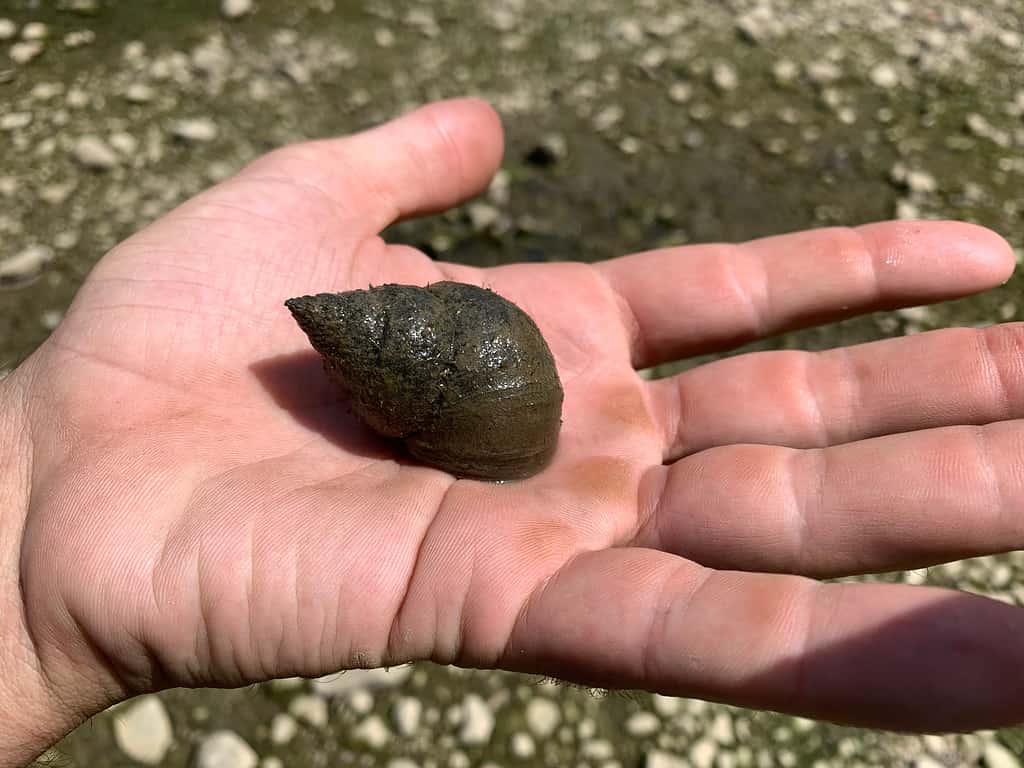
Chinese mystery snails are native to Southeast Asia, but they’ve established a presence in the United States, including Ohio.
©CampSmoke/Shutterstock.com
There are 33 exotic animal species inhabiting the prairies, forests, Great Lakes, and wetlands of Ohio. The American bullfrog, feral swine, wandering broadhead planarian, zebra mussel, and Chinese mystery snail are prominent examples.
Oklahoma: 20

Grass carp are widespread in Oklahoma’s waters.
©Rostislav Stefanek/Shutterstock.com
Feral hogs take the lead here again, with recorded presence in 76 of the state’s 77 counties. American bullfrog in 16 counties and red-eared slider in 15 counties come far behind.
European starlings, house sparrows, Mediterranean geckos, freshwater golden clams, grass carp, house mice, red shiners, and rock pigeons are also widespread.
Oregon: 20

As similar to beavers as nutrias may seem, they’re invasive to the Beaver State.
©Barbora Polivkova/Shutterstock.com
About half of the counties in the Beaver State are dominated by wild hogs. New Zealand mud snails, nutria, rainbow trout, wandering broadhead planarian, coyote, feral cat, European starling, and red-eared slider are some other widespread species in Oregon.
Pennsylvania: 26
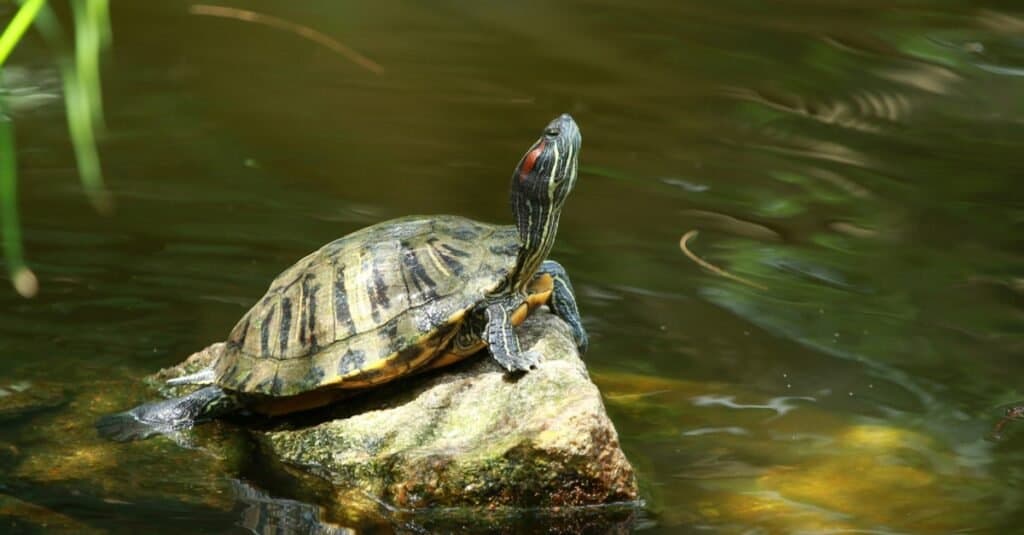
You may spot red-eared sliders in Pennsylvania, but they don’t belong as part of its natural ecosystem.
©dawi88888/Shutterstock.com
Wandering broadhead planarian is almost a constant on every list. The species takes up 30 of the 67 counties in Pennsylvania, while its three-lined cousin is present in 17 counties. Some others include house sparrows, New Zealand mud snails, American bullfrogs, common carp, European starlings, red-eared sliders, Norway rats, and feral pigs.
Rhode Island: 4

Despite Rhode Island’s small size, it’s not immune to invasive species, and the American bullfrog is one of four there.
The smallest state in the nation isn’t spared from invaders. The non-native species include the American bullfrog, European green crab, Norway rat, and wandering broadhead planarian.
South Carolina: 27
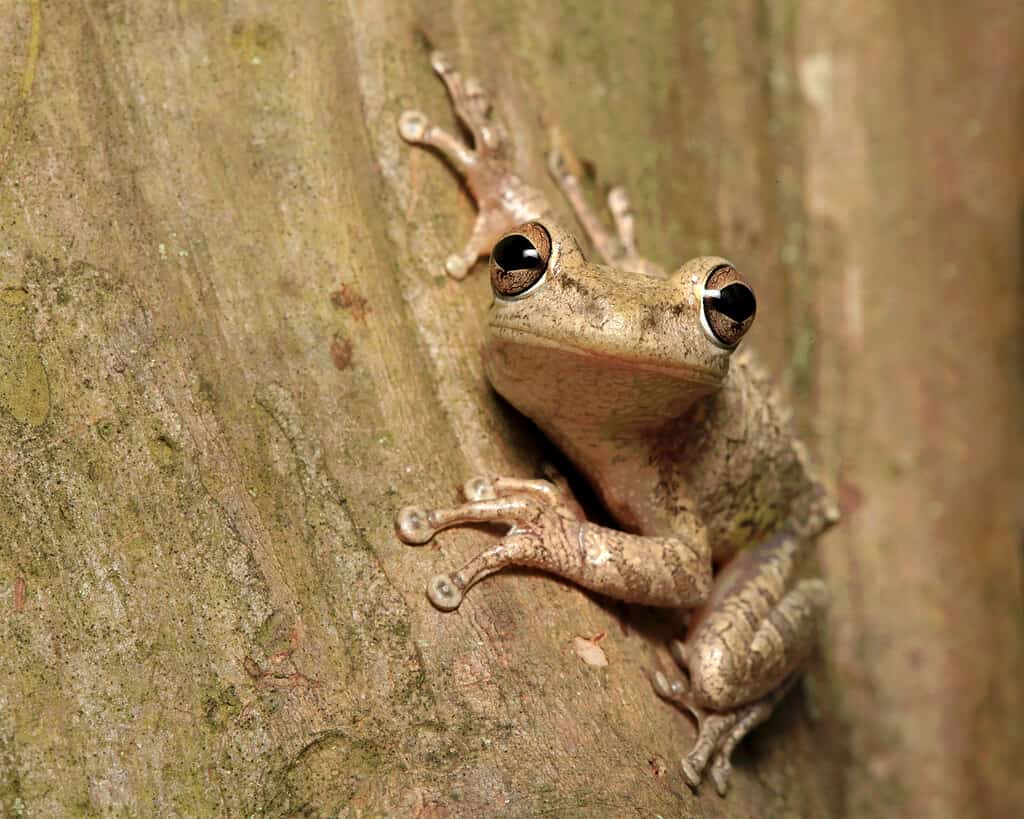
Cuban tree frogs may look cute, but it’s invasive in the United States, including South Carolina.
©Steve Bower/Shutterstock.com
South Carolina has swamps, bogs, mountains, coastal plains, salt marshes, and forests. It supports native and non-native wildlife. Wild boar, yellowbelly slider, Cuban tree frog, Mediterranean gecko, shovel-headed garden worm, and 22 others are the introduced species in the state.
South Dakota: 6
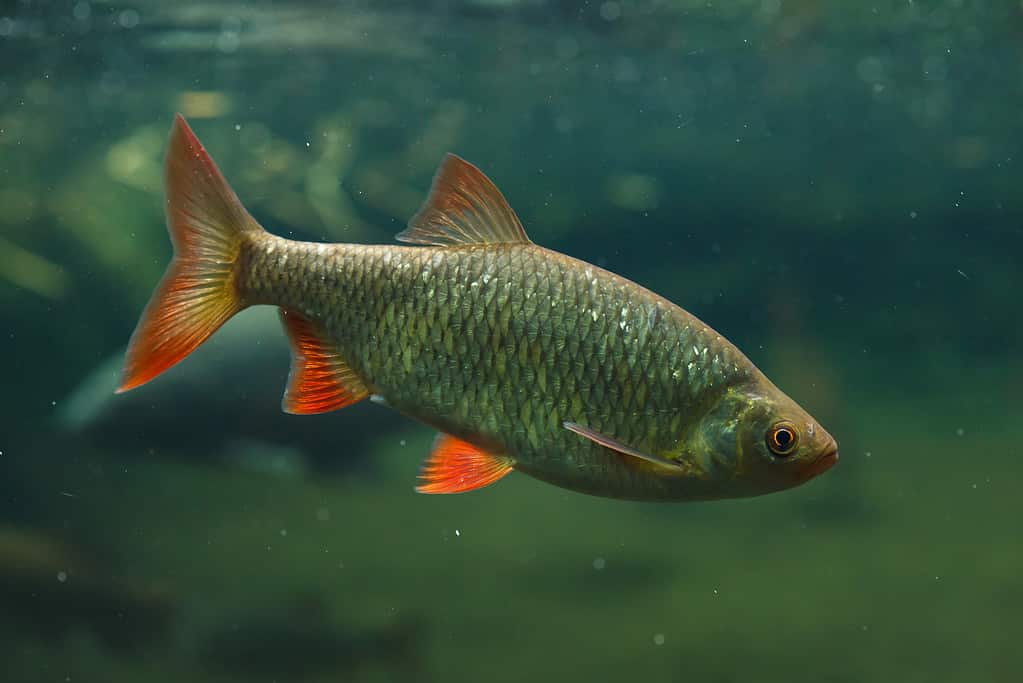
South Dakota doesn’t have many invasive species. The common rudd is one of them.
©Vladimir Wrangel/Shutterstock.com
Similar to its closest rival North Dakota, South Dakota has a limited population of invasive animals. Common carp, New Zealand mud snail, coyote, red fox rudd, and American bullfrog dominate 9% of the state.,
Tennessee: 17
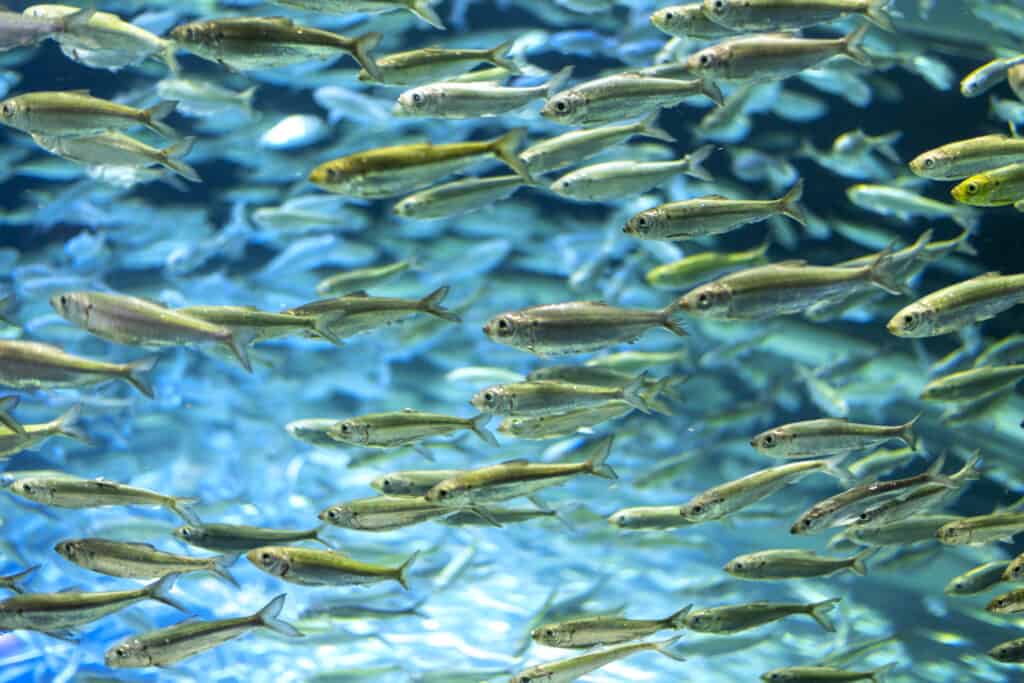
The Volunteer State has a number of invasive species on its land and in its waters. The waters host alewives.
©iStock.com/Victor Korchenko
Tennessee contains rolling hills, rivers, valleys, forests, and mountains for wild animals to thrive. But, unfortunately, it appears invasive species such as feral pigs, common carp, coyotes, shovel-headed garden worms, alewife, American bullfrog, and European starling also got an invite.
Texas: 31
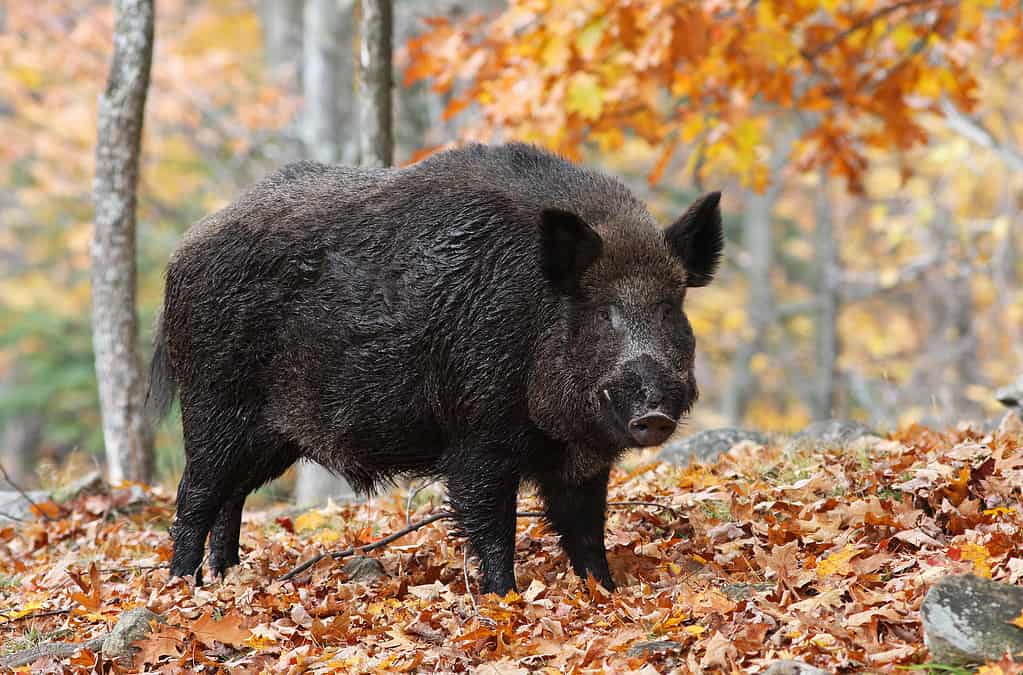
Like in many other states, the most prevalent invasive species in Texas is the wild boar.
©Mircea Costina/Shutterstock.com
Unsurprisingly, wild hogs are the most prevalent species in Texas. The state has the highest population of feral pigs in the country. Brown anole, green sunfish, red-eared slider, mollusk-eating hammerhead worm, coyote Mediterranean gecko, and nutria are part of the remaining 30 introduced species.
Utah: 8
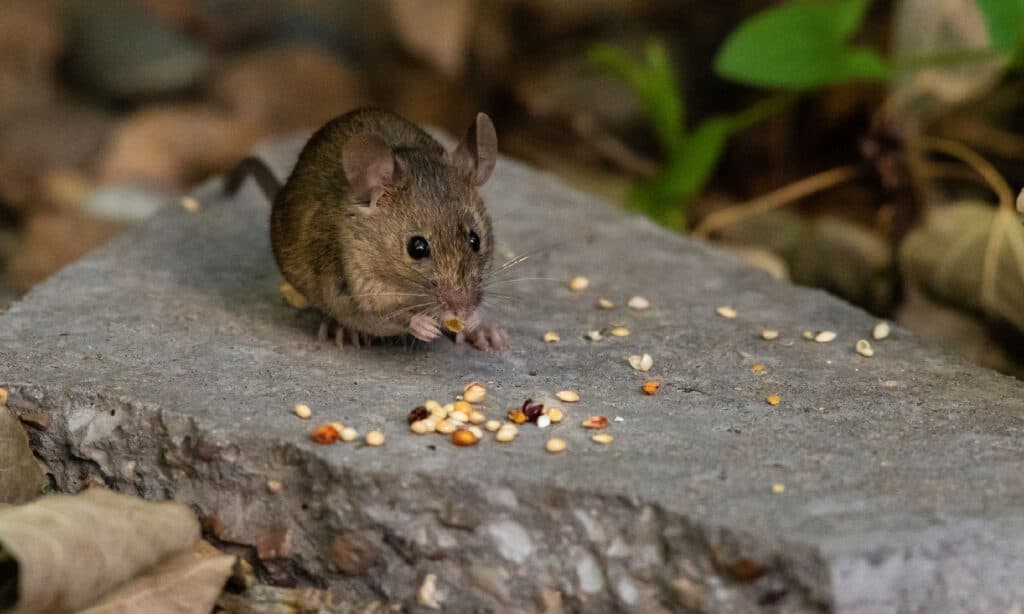
House mice may be common, but they’re not native in many of their ranges, and that includes Utah.
©iStock.com/Víctor Suárez Naranjo
- New Zealand mud snail
- Coyote
- American bullfrog
- Wild boar
- Red-eared slider
- Norway rat
- House mouse
- Mediterranean gecko
Vermont: 11

All European starlings in the U.S. today are descendants of 100 birds that were released in Central Park in the early 1890s.
©Petr Simon/Shutterstock.com
Vermont has lakes, marshes, shorelines, ponds, forests, and meadows. Alien species and their varying coverage rates call these habitats home. The animals include the American bullfrog, wandering broadhead planarian, Norway rat, red fox, coyote, American red fox, wild pig, European starling, house mouse, red-eared slider, and three-lined land planarian.
Virginia: 17
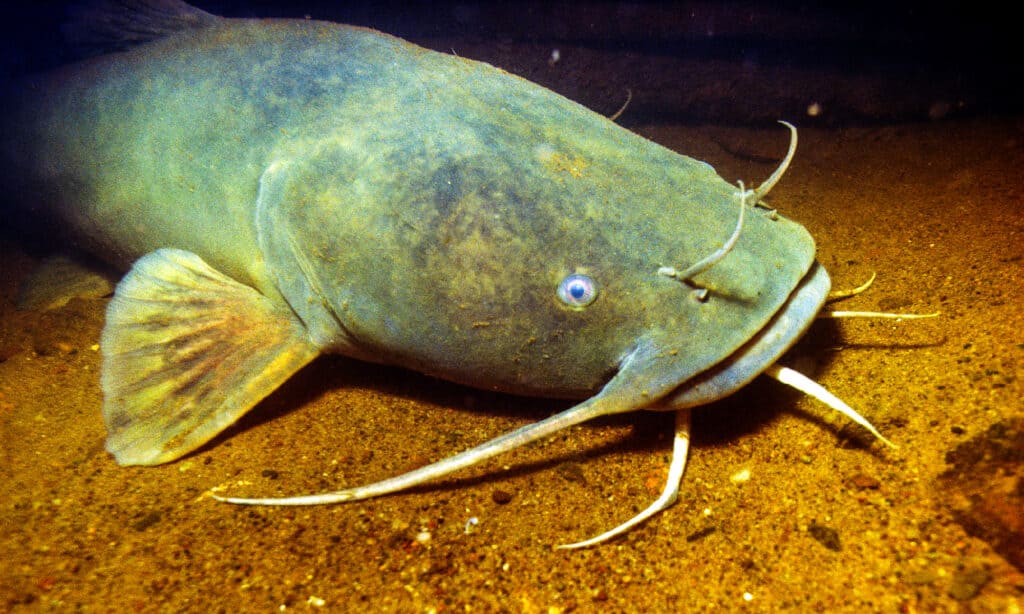
Many of Virginia’s invasive species are fish, and the flathead catfish is one of them.
©iStock.com/stammphoto
American bullfrog, wild hog, red-eared slider, red fox, coyote, wandering broadhead planarian, and shovel-headed garden worm dominate the list of non-native species in the state. Others are the house mouse, Mediterranean gecko, multi-lined hammerhead worm, nutria, alewife, brown anole, American red fox, and flathead catfish.
Washington: 24
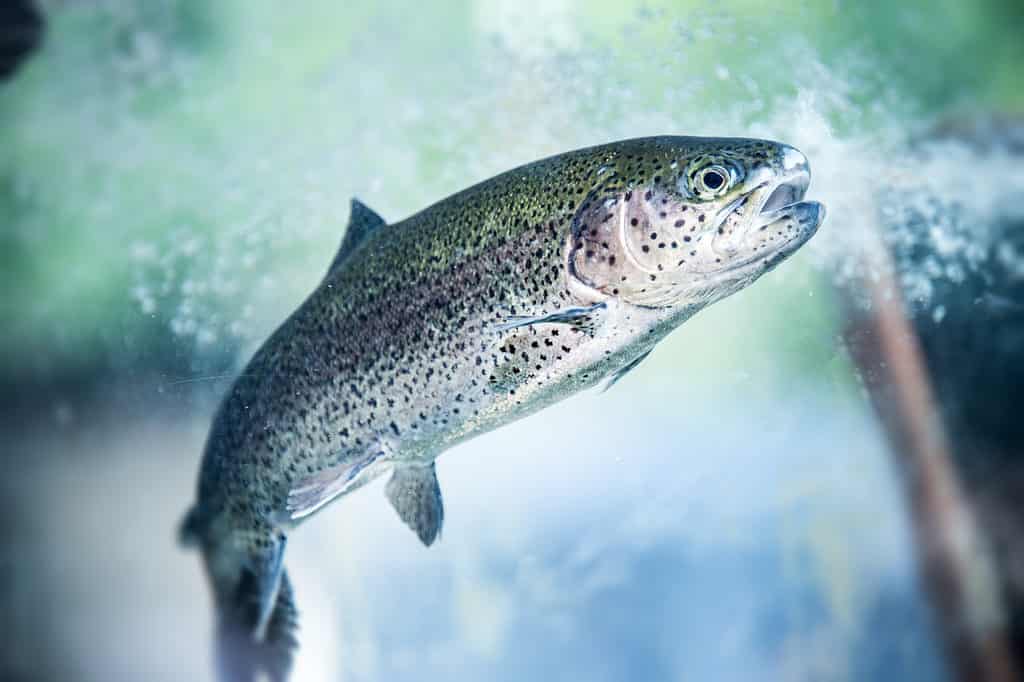
The waters of Washington host the invasive rainbow trout.
©iStock.com/Max2611
Washington’s wide array of grasslands, shrub-steppe, wetlands, estuaries, rainforests, and prairies support native wildlife. However, the 24 invasive animal species threaten their survival. These animals include New Zealand mud snail, American bullfrog, nutria, European starling, red-eared slider, coyote, rainbow trout, and 17 others.
West Virginia: 9

The number one invasive species in the United States is the feral pig.
©4028mdk09, CC BY-SA 3.0, via Wikimedia Commons – License
The exotic species in the Mountain State are feral swine, wandering broadhead planarian, American bullfrog, European starling, mollusk-eating hammerhead worm, Norway rat, coyote, red fox and red-eared slider.
Wisconsin: 43
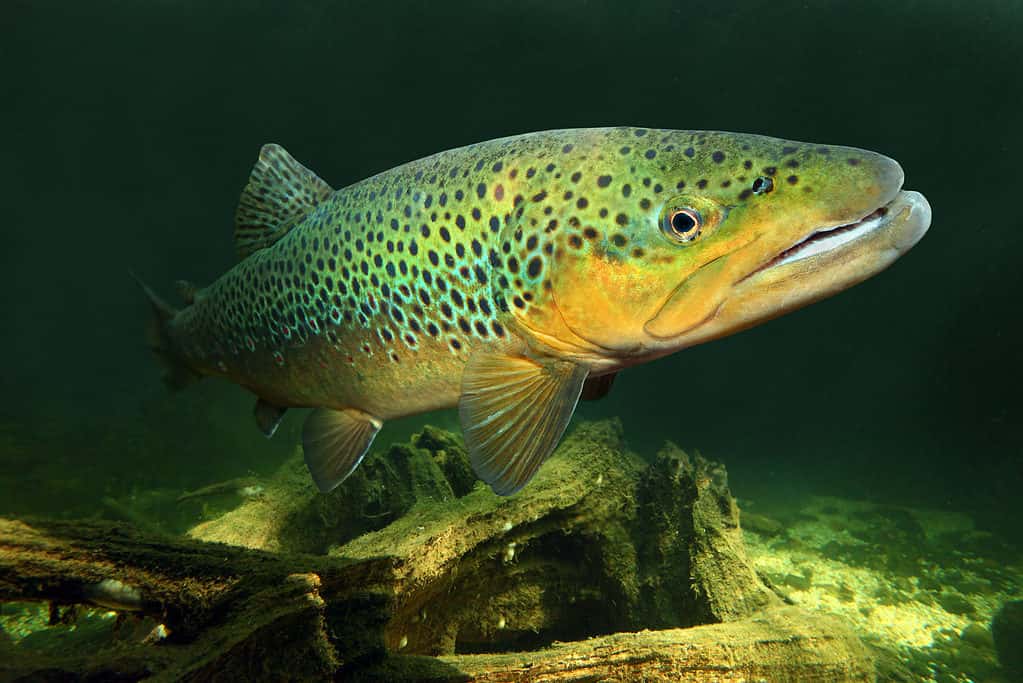
Several fish species have invaded Wisconsin waters. The brown trout is one of them.
©iStock.com/abadonian
The red fox is currently the most widely introduced species in Wisconsin. Chinese mystery snails, coyotes, banded mystery snails, and zebra mussels and banded mystery snails are also prevalent. Some other species are alewife, round goby, brown trout, bighead carp, jumping worm, and silver salmon.
Wyoming: 3

American bullfrogs — and their tadpoles — are one of only two invasive species in Wyoming.
©iStock.com/Suwatwongkham
- New Zealand mud snail
- coyote
- American bullfrog
The photo featured at the top of this post is © Richard Bartz, Munich Makro Freak / CC BY-SA 2.5 – License / Original
Thank you for reading! Have some feedback for us? Contact the AZ Animals editorial team.






